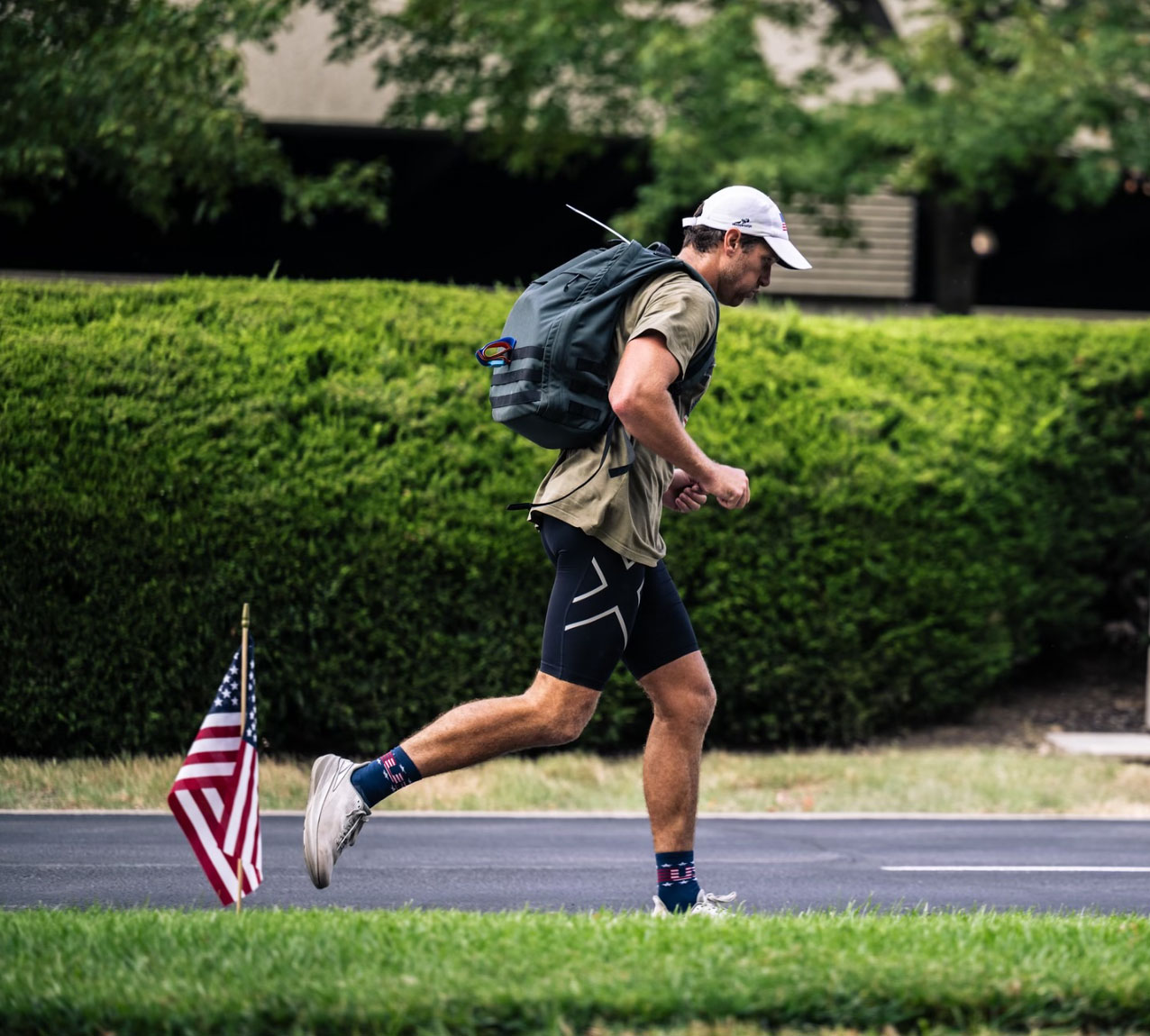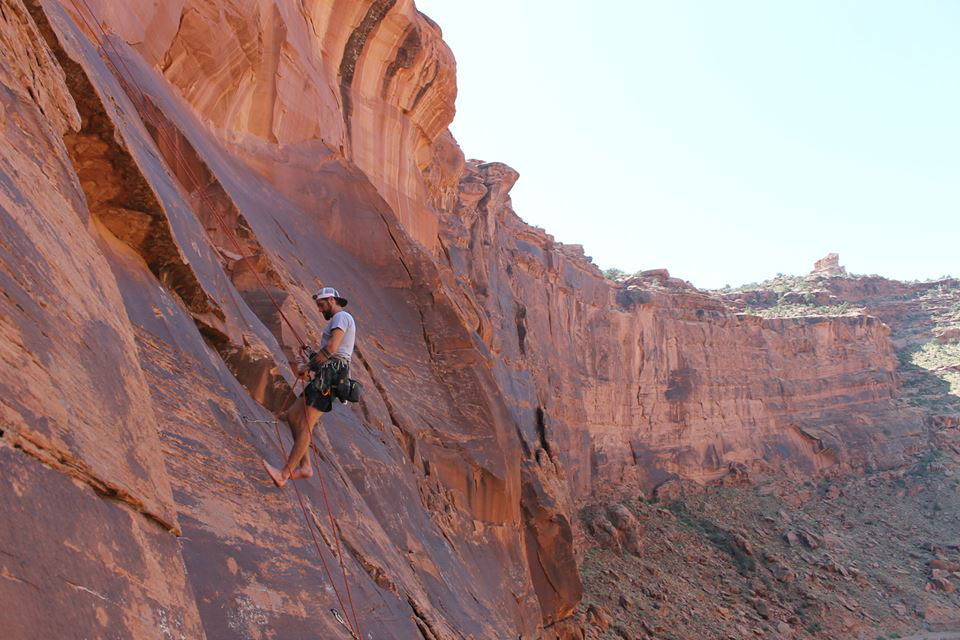
On today’s episode of the CBJ Podcast, host John Burgman and guest Andrew Potter chat about gym startups, software startups, market analysis and much more in between. Andrew is the founder of the RoKC climbing gyms as well as the founder of the software company Approach. In starting both a gym and a gym management technology company, he’s had a fascinating journey as an entrepreneur in the climbing industry. He’s also gained experience and insights on how to get a business idea off the ground, how to stay tenacious in turning an idea into a reality, and how to keep up with changing business trends. There’s business wisdom packed throughout this episode—all anchored by Andrew’s belief in seeing a need in a market (or in an entire industry) and figuring out a way to create something that meets that need.
Thank you OnSite for your support!
And thank you Devin Dabney for your music!
Timestamps
00:00 – Intro
04:16 – RoKC’s Creation
08:57 – Planning a Gym While Deployed
15:13 – Climbing as Meditation
18:18 – A Meticulous Approach to Opening a Gym
21:33 – Market Assessment
27:23 – Attracting Families
31:09 – The Approach Software’s Creation
34:28 – Getting Going as a Startup
39:43 – Pushing Through Challenges
42:55 – Resilience
50:20 – Keeping a Gym Relevant
59:01 – Mom-and-Pop Gyms
01:03:01 – Full-Service vs. Specialized Gyms
01:08:21 – The Board Room Concept
01:13:42 – Market Saturation
01:15:39 – Contacting Andrew
01:16:19 – Closing
Abridged Transcript
BURGMAN: … I’m interested in hearing the background of how the gyms were created and how you got the idea of the gyms because I know it’s directly tied to your military service, which makes your creation of the gyms pretty unique in the industry. So, can you tell me the story of how the idea to start a gym came about?
POTTER: Going way back, I come from a military family, so I was born in Clarksville, Tennessee, right outside of Nashville. And then we moved to Guam and then Germany and then to D.C. My dad was working in the Pentagon, and when we were in Germany, we got into Boy Scouts. So, I started climbing in Garmisch, Germany, in the late 90s and fell in love with climbing. And then when we eventually settled in Kansas City, because my father was retiring at Leavenworth, I climbed at the local gym, which is a 90s gym called Ibex that’s still around today. I was there for their entire evolution from 6th grade through college, where I did Boy Scout outings and I slept on their pea gravel floors, and then they changed to mulch and I slept on their mulch floors, and I did my first competitions there. I actually broke my first ankle bouldering there. So, climbing was always just a part of who I was.
And then a buddy and I founded the University of Central Missouri Climbing Club, and we were both in ROTC together. We founded that club and there were like four people in the club. We would take trips to Arkansas, to Horseshoe Canyon Ranch. I competed in Horseshoe Hell in the first year, like 2005. And that’s where I met Dave and Dan Chancellor of So iLL and just had a ton of really cool connections in climbing. Even as I was in the army and travelling the world, everywhere I went I’d find a gym to set at, or there’d be a gym on the military base I was at that I would set at or instruct at, and I would take trips. So, I ended up climbing all over the world. Then when I was on my second deployment to Afghanistan, knowing I was probably going to do a third or a fourth, I was like, “Man, I want to have a family one day. I want to have more normality in my life. How do you do that? How do I wake up doing stuff I enjoy [doing] every day?” I was like, “I love climbing. It’s a passion of mine. I wonder if this is something that’s viable.” That’s what kind of started the dream of: “Could I move back home to Kansas City, get out of the army, and open a climbing gym? Would that even work?”…
…Can you talk a little bit about being there in war in Afghanistan and having your mind on creating a gym? I guess what I’m wondering is, aside from sort of a business idea, an entrepreneurial idea, was there something about creating a gym that gave you a much-needed release from what I’m guessing is the chaos and horror of being at war?
Yeah, it was definitely an escape, and I didn’t realize it. And so is climbing, and so is being in the mountains. They’re so meditative. Being able to bury yourself in this large undertaking—understanding an industry, understanding how to read markets, understanding what an SBA loan is or what EBITDA is…all this stuff—it was like trying to get a master’s degree [during] your nights and weekends, and you’re hoping not to get rocketed. So, yeah, it was definitely an escape that I didn’t realize I was going to get. And I really enjoyed the learning and the problem solving.
There are times when you’re overseas when there is downtime and sometimes significant amounts; because of the rules of engagement and what’s happening, there are times you just can’t go out on mission. So, if you’re not going out on mission for three, four or five days, there might be a full day-and-a-half or two of planning, planning and then training…

…When you were looking at Kansas City, a market that you were pretty familiar with, beyond the napkin math, what [got you thinking] this would be a good market for a climbing facility?
I spoke about Ibex earlier, a gym that’s still around. I really enjoyed that gym, and I still do. And it was pretty far outside the city, so we just didn’t have something closer to downtown and near the metro. Then there was another bouldering gym that existed as well that I eventually acquired. But that bouldering gym was just bursting at the seams. I mean, overflowing—way too small of a space. And it was bouldering only; there was no sport climbing. And Kansas City is really more of a sport climbing community. You almost have to think of it—if somebody doesn’t know anything about climbing, what’s the first thing they’re going to think? They’re not going to think bouldering; they’re not going to think 13-to-15-foot walls and falling to mats. They’re going to think ropes and taller walls; they’re going to think Galyans; they’re going to think Lifetime Fitness, and the YMCA walls where there’s, like, 35 feet. Maybe that’s what they’re going to think about when they think about climbing.
So, to have a bouldering gym be so successful—and it was—it was kind of like, “Wow.” And I’m a sport climber, I enjoy bouldering, but I’ve always been traditionally a sport climber. And I was like, “But we don’t have any sport climbing in our city. If we could put some decent sport climbing in, I think that would attract a lot of attention and it would bring in a lot of members.” So, that was part of it. There was lack of saturation, there was lack of sport climbing…
What do you do then to attract that cohort: the family…How do you encourage the family to, instead of going to the trampoline park on a Saturday, go to your climbing gym?
It’s taken a lot of time and organic growth, in part. We’re not necessarily directly competing with the trampoline park, so to say; it’s just a good metric to look at. But I think [what plays a role is] the fact that we have an extremely diverse community, in general—from young to old to very fit to maybe not so fit—and we showcase that and we kind of say, “If you can climb a ladder, you can climb in our gyms,” and we set to help support people who are just getting introduced and learning about this, and we really push and promote that. We don’t necessarily try and drive marketing and social media through these mega-strong climbers.
Something else we did early on, that was somewhat of the antithesis of the climbing industry, definitely bothered a lot of people. But it was something that I was very adamant about: You have to wear a shirt in our gyms. At the time, I never climbed with a shirt on. If I’m going to Ibex or wherever, my shirt is coming off. But I have a seven-year-old daughter now, and the thought of her walking into a gym and there’s this big, strong, burly dude, grunting up the wall shirtless, doesn’t create this family-friendly environment. It’s fine if you’re somewhere where climbing is just inherent in the culture. When you’re in Kansas City and your kids have always played soccer and tee-ball, and then you walk into a climbing gym and it feels more like there’s a CrossFit gymnast on the wall, it’s not very inviting. So, we were quite strict about that from the beginning…

Can you tell me the story of how you went from owning a gym to then venturing into software?
…The software we were using, it was fine, and we didn’t have a problem. But then we opened a second gym, and a lot of the software that we had used or seen out there were built as a single-studio product. That meant when opening a second facility, it worked, but it was kind of a nightmare. So, for me, it was like, “Man, why is this so complicated?” We started demoing a lot of other products, and we found that there were a lot of similar issues. Most people built for the single studio, and then maybe they advanced into multi-facility capabilities later. But because their initial data structure and everything they did from the beginning wasn’t designed for it, [there were] these weird workarounds. And there was just stuff that they couldn’t do that we thought was important to our business.
In addition to that, a lot of the software was quite dated, maybe 10, 12, 15 years old at the time. I kept thinking, “I’m going to own climbing gyms for the next 20 years, right? If there’s nothing new being built, does that mean in 20 years, my product, my software, is going to be 35 years old?” At that point there was a member at our gym, there was a software engineer, and him and I had met and become friends, and I had asked him, “Hey, is this possible? Could we build this?” And he was like, “Yeah, we could build this, and we could build it quickly.” And to my own naivety into software and whatnot, I thought that this would be a fun problem to solve and that it wouldn’t be that hard. And I was just dumb enough to believe myself…
Is that the key then, to getting any idea—whether it’s a gym or a software company—to getting it from idea to actual reality? Breaking down this monumental thing into a bunch of tomorrows, as you say?… Itemize your goals on sort of a smaller scale, that makes it a little easier to manage just day to day?
Yeah. I looked at this—I went through Ranger School and I did three tours to Afghanistan, all this stuff—and if you look at the 120 days at Ranger School or you look at this nine-to-twelve-month deployment, and you’re thinking of everything that could or can happen over the next 120 days, 90 days, this or that, it would just be absolutely overwhelming, right? There’s so much that goes into building a climbing gym, and there’s so many things that go wrong with building a climbing gym that it’s like you really just have to focus on one problem at a time, one day at a time. And with that, I think there’s a few important things about building a business and being an entrepreneur. I think that the most important one is resilience.
Every entrepreneur is going to face adversity. Every single one. I don’t care where you come from. You could have all the money in the world, and you could be ready to open tomorrow, and the fire chief could come in and say, “You need a sprinkler head there,” and then that part doesn’t come in for two weeks. So, now you have to delay opening your gym. Anything can happen. So, you have to be resilient. You have to be committed to the pain that you’re going to go through because you will go through it. And when you look at the greatest and the most successful entrepreneurs of the world, and you look at their inception stories, everyone has gone through insane amounts of adversity…
…How do you keep a gym relevant? How do you keep software relevant? Or anything within the industry, how does it keep up to the trends?…
I think to an extent it’s decent to look at the broader market. But it also can be kind of a danger just because what is doing really well out in Salt Lake might fall flat here in Kansas City. So, I think what’s doing well in Australia or Europe might fall flat, but it also might be a really great idea. There’s an article I wrote for CBJ about weekly memberships, and that’s not an original idea. People have been doing that in the fitness industry for a long time, but it was also outside of the climbing industry until we kind of introduced selling weekly memberships at gyms. But it’s not really my original idea. It’s more of something that we were like, “This is great. We should bring it to the industry.”
So, there’s trends like that that I think you have to look at and then see if it’s a good fit for your market, for your business, because it might not be, right? But then it also comes down to looking at the trends out there. Do a little research for yourself: “Is this in a market that’s similar to mine?” Like, mid-size metro, not-a-top-30 metro, small college town, whatever. “Is it working? Is it working for them? Can I find out if it’s working? And if it is, let’s experiment.” You don’t have to go all in on the trends that are happening.
When the MoonBoard became a thing and it started going across gyms across the world, you didn’t have to go buy five MoonBoards. In fact, you didn’t have to buy a single MoonBoard. You could have put up a spray wall and set climbs on it each week that were slightly different and then see what the reaction would be: “Are your strong climbers going in there and sessioning it and projecting it? Is the area being used?” Reiterate on that and then say, “Hey, this could really work. Let’s put it in a MoonBoard.” So, just because a trend is happening doesn’t mean it’s going to be successful or great or that it will be in your market. My advice to anybody is look at it; see if you believe it could work. Test it, try it out. See if it may work or test your consumers…It’s interesting to see the data that comes out of that that then informs business decisions. And it might be something that you didn’t expect. So, I think just being curious and then testing some of these trends isn’t a bad idea…

John Burgman is the author of High Drama, a book that chronicles the history of American competition climbing. He is a Fulbright journalism grant recipient and a former magazine editor. He holds a master’s degree from New York University and bachelor’s degree from Miami University. In addition to writing, he coaches a youth bouldering team. Follow him on Twitter @John_Burgman and Instagram @jbclimbs. Read our interview Meet John Burgman, U.S. Comp Climbing’s Top Journalist.










